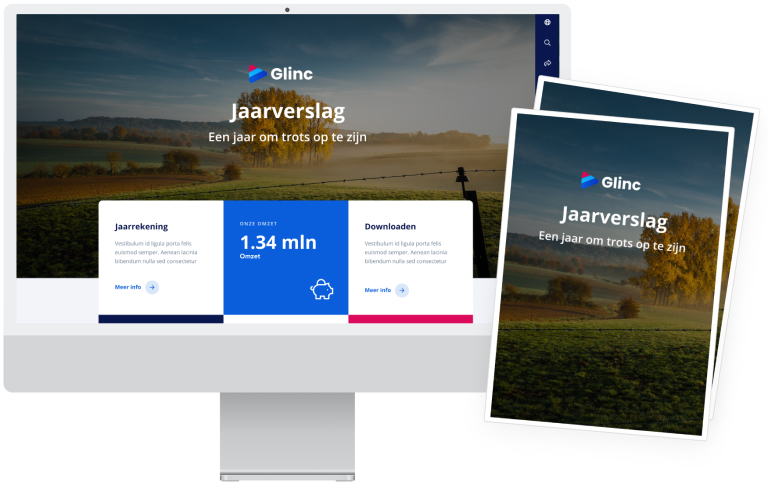One hydrogen network developed by Gasunie, on land and offshore
One hydrogen network developed by Gasunie, on land and offshore
The hydrogen knot has been cut. Last summer, Dutch Minister for Climate and Energy Policy Rob Jetten appointed Gasunie as the party to construct and manage the hydrogen network in the Netherlands. The Minister now intends to give us the same role for the hydrogen network in the North Sea. Gasunie’s offshore hydrogen development manager Werna Udding and Guido Custers, project director at Gasunie for the Netherlands hydrogen network, discuss the plans. ‘We have to start now to ensure that the first generators and the first users are connected with each other in good time,’ says Guido.

Hydrogen from offshore wind turbines
Werna says, ‘To make industry in particular more sustainable, we need large quantities of hydrogen. By converting electricity generated in the Netherlands into green hydrogen using electrolysis, we become less dependent on other countries for our hydrogen. Partly for this reason, the Netherlands has huge ambitions in the field of offshore wind energy; specifically, we want to see it increase from the current 2.5 gigawatts to 21 gigawatts by 2030. Electrolysis is also a way of fitting surplus electricity into our energy system. There will be so much wind energy on occasions that the power grid will not be able to handle it all. By turning it into hydrogen, you can still use the energy generated.’
Pipelines or cables?
‘A considerable part of the wind energy will already be converted into green hydrogen at sea,’ says Guido. ‘You have two options for transmission. Either you bring the wind energy ashore over a power cable and turn it into hydrogen on shore, or you turn it into hydrogen at sea already and transport it through a pipeline. The greater the distance to be bridged, the more efficient a pipeline becomes. The wind turbines will be located about 200 kilometres from the coast; then a pipeline is the better choice.’ Werna says, ‘You also have to deal with fitting facilities into the available space. The electrolysers need to be installed somewhere and it is already pretty crowded on land. At a certain point it will be more efficient and the more sensible choice to do the electrolysis offshore.’
One public system
Guido says, ‘We also have to look beyond the Netherlands. Countries without an ideal coastline for offshore wind also want to become active in the hydrogen chain. An infrastructure needs to be built for that trade. Consider connections with Belgium and Germany to export to, and Denmark and Norway to import from.’ Werna says, ‘With so many connections, the question that arises is, how can you best design the transport of hydrogen? If you make it a single system each party will not have to install their own pipeline. This is comparable to our national gas grid, which is a publicly managed network that parties can connect to.’
Costs and risks
Guido says, ‘Gasunie will be responsible for the costs of constructing the hydrogen network. And then there’s what’s called the “slow uptake risk”, that’s to say the risk of there being too few customers at first to use all the installed capacity. For the onshore hydrogen network, the government will assume a part of that risk. We will share the remaining part of the risk with the first customers. This form of risk sharing may prove suitable for the offshore network too.’ Werna says, ‘We may be able to cut costs by reusing existing offshore pipelines. Repurposing is likely cheaper than laying a new pipeline, but the pipelines are of course also still being used for gas transmission. About 85 percent of the existing onshore gas pipelines can be repurposed for use for the onshore grid. The situation is a bit more complicated out at sea. Where the onshore pipelines belong to GTS, those offshore belong to other parties. We will investigate whether and where repurposing is possible.’
Seeking alignment
Guido says, ‘Constructing a pipeline is not rocket science; the biggest challenge is the connections along the way. Which pieces do you install first? You want to start with a success, so you want the first customers to be ready for it in time as well. Investing too early is a waste, so you have to constantly seek alignment. Minister Jetten wants to see a 50-megawatt offshore electrolyser installed by 2030 at the latest to immediately convert the wind energy generated into hydrogen. We want to be able to provide access to this immediately with a sea-to-shore pipeline.’ Werna says, ‘We are constructing the network in advance of the market so that we can put supply and demand into motion. Then you have to choose wisely where the hydrogen pipeline comes ashore. We’re still searching for the best spot.’
Exploring locations
‘At five landing points, we now see perhaps twenty routes along which the offshore hydrogen can be brought ashore,’ Guido explains. Hopefully, we will be at the point in 2023 or 2024 where we have discounted enough of the options that we can move towards a final choice.’ Werna says, ‘As soon as there is anything to report, Guido and I discuss it together. However, many processes run externally and often simultaneously, and for offshore, for example, also in coordination with parties at the cable landing points. All the same, with sufficient research and coordination, we will get an increasingly better picture of how and where the two networks can merge to become one single Dutch hydrogen network.’

